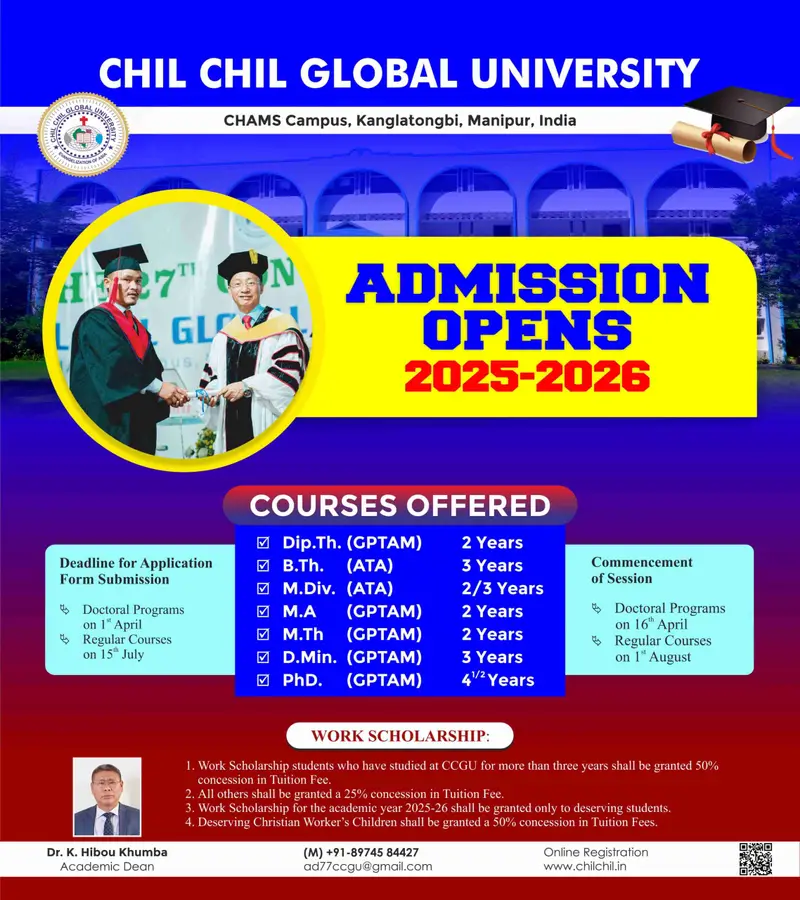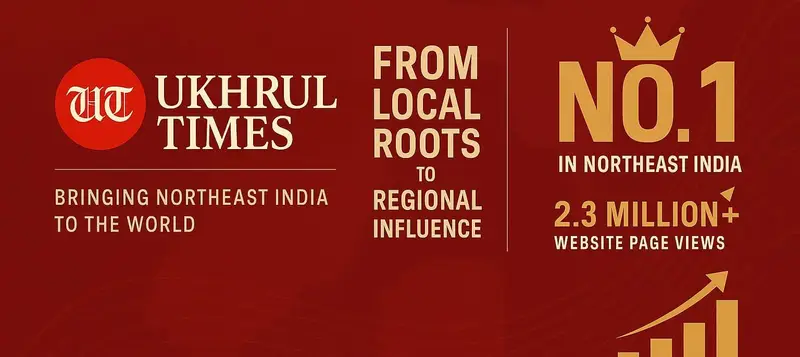Now Reading: An Appeal: Follow transparent, credible and scientific processes for Meitei community ST demand
-
01
An Appeal: Follow transparent, credible and scientific processes for Meitei community ST demand
An Appeal: Follow transparent, credible and scientific processes for Meitei community ST demand

THE RELENTLESS onslaught to grab tribal lands in the hill areas of Manipur with students union joining the chorus for inclusion of Meitei community in the list of Scheduled Tribes (ST) and the announcement by the Scheduled Tribe Demand Committee Manipur (STDCM) that it will renew its campaign from January 2024 will embroil the state in more problems than never before. The desire by the Meitei community to become ST is understood by the current STs of Manipur as an attempt to overcome constitutional safeguards given to tribal lands and make them eligible to buy tribal lands in the “Hill Areas” of Manipur. It is clear that ST status demand is not about jobs or seats in government and its institutions but about grabbing tribal lands in the hill areas by the Meitei community who dominates the government and all its machineries. The ministry of tribal affairs, government of India (GoI) in their letter dated 29.5.2013 has already requested the State government of Manipur to send specific recommendation along with a recent socio-economic survey and ethnographic study. This advise is ignored by the STDCM. Instead they are pursuing a policy of majoritarianism to prove that the majority population wants ST status for Meitei community through “missed call campaign” and own self-assertion of being a tribe even to this day. They have conveniently forgotten the 5 criteria recommended by the Lokur Committee for identification which are – primitive traits, distinct culture, geographical isolation, shyness of contact with the community at large, and backwardness. By any stretch of imagination Meitei community do not fulfil any of these criteria except distinct culture, yet all Meitei organisations are saying they fulfil all the criteria? What such assertions is doing is only pushing the tribes away to conclude that they do not have a place in Manipur. That, they are better off without being part of Manipur. The senseless push will unwittingly lead to the disintegration of the state of Manipur.
Join our WhatsApp Channel today!
The strategy of the Meitei Civil Society Organisations (CSOs) led by STDCM to pressurise the state government to send a proposal to the GoI recommending for inclusion of Meitei community in the list of ST based only on purported ethnographic study carried out by Meitei scholars which may show that they were a tribe ‘once upon a time’ without any concrete scientific evidence of fulfilling any criteria laid down by the Lokur Committee is likely to trigger a tribal versus non-tribal conflict. Manipur is already in turmoil with the current Meitei- Kuki-Zo ethnic conflict. The non-recovery of more than 3,000 guns in the hands of radical elements is starting to have its adverse effects. Gun totting radical youths allegedly disguised as policemen and commandos are engaged in extortion. On New Year’s Day a deadly incident erupted causing deaths and injuries in the heart of Muslim area. Allegations are being hurled that the security personnel are becoming mere spectators while lawlessness and extortion is happening. The state government is being questioned about its priorities of dealing with minor violations while life threatening crimes are allowed to be conducted in the presence of law enforcing machinery.
In this developing context, it is disconcerting to observe that the STDCM and other Meitei frontal organisations are bent on pushing their demands based on emotional factors pushing the state towards the precipice. They can be accused of being irresponsible by totally ignoring the requisite processes that needs to be followed for inclusion of the Meitei community in the list of ST. One assertion after another are being made that the Meitei scholars, who would obviously be biased and partial, have carried out ethnographic studies from various historical writings to establish that they are tribal people and the Meitei community fulfil all the criteria of the Lokur Committee. The vagueness of the contention here is the ‘period in history and present day’ – whether the Meiteis were a tribal community in the past and is still a tribal community at the present day. It could be true that Meiteis were once a tribe before the coming of Shantidas Gosain in the early 18th Century. The Hindu priest converted the Maharaj of Kangleipak and he in turn imposed Hinduism on his subjects. He influenced the changing of name of the Maharaj to ‘Garib Niwaz’ and also the kingdom from ‘Kangleipak’ to ‘Manipur’ linking the kingdom to stories in the Mahabharata epic. Three centuries of the practising Hinduism has changed the culture of the Meitei community to a great extend that they can be termed as an advanced society. The pertinent question now is whether the Meitei community, if it is established that the Meiteis were a tribal people three hundred years back or even during the caste census of 1931 Census, are still possessing tribal traits TODAY warranting their classification as a ‘tribe’. This can be established by a NEW ethnographic study conducted by an independent third party appointed by the state or central government and not on the assertions made by Meitei scholars who would obviously be biased. Another crucial question thereafter is to establish that the Meitei community is backward TODAY through a socio-economic survey conducted by the state government in line with the criteria laid down by the Lokur Committee. When all the above processes are available, it is at this stage that the matter would be considered and specific recommendations made to give the ‘Scheduled Tribe’ status. For acceptability of the study and survey it is crucial that they are conducted in a transparent and credible manner by an independent third party involving all stakeholders.
Also read | Revolutionary People’s Front issues clarification on Lilong Chingjao firing incident
Regardless of the facts that –
(a) firstly, it has to be established that the Meitei community were tribal people during the time when the first caste census of India was conducted in Census 1931; and if so
(b) secondly, an independent ethnographic study of the Meitei community would need to be carried out to establish whether they still currently possess tribal traits; and
(c) thirdly, a socio-economic survey of the Meitei community would need to be conducted on the lines of the criteria laid down by the Lokur Committee to establish whether they are still backward – the STDCM leading the campaign, based on emotive consideration and not on scientific approaches as already advised by the GoI, will only provoke the tribes further to ask for separation from being part of Manipur in order to safeguard their lands.
In the given situation, it would not be wrong for the tribes of Manipur to consider freeing themselves from the shackles of Meitei-centric Manipur administration to escape being trapped in the state of Manipur and succumb to the guiles and trickery of the dominant Meitei community of losing their tribal lands to the ST Meiteis (if they get the ST status) in the hill areas of Manipur.
What is being impressed through this article is an appeal to the frontal Meitei ST demand organisations to pressurise the state government to carry out all the requisite processes through a transparent, credible and scientific approach through an independent third party involving all stakeholders. The demand for ST status needs to be processed in a transparent, credible and scientific approach for firstly establishing the Meitei community were tribal people in the past, secondly that they still possess tribal traits today, and are currently living in backwardness conditions. Basing the demand on majoritarianism, subterfuge, manipulation and emotive considerations without scientific justification is likely to push the tribes of Manipur living in the hill areas of Manipur to seek escape from a situation where they will be trapped in a state government dominated by the Meitei community and would become vulnerable to losing their tribal lands in the hill areas to the new entrant in the ST list i.e. to the Meitei community. No self respecting tribe will take such assault on their tribal lands lying down. There is bound to be stiff resistance by the tribes of Manipur if matters are dealt without scientific consideration and without involving all stakeholders.
Manipur is in the midst of communal conflict on ethnic lines for eight months with the Meitei people unable to venture into the hill areas and the Kuki-Zo people unable to enter the Imphal valley. Administration is in shambles as only Naga/Muslim/outside government employees can travel across the state but Meitei and Kuki-Zo officials are confined in their own areas. How the state government plans to implement various government programmes, schemes and projects in the state in the ongoing conflict needs to be seen. It baffles every right thinking citizens how the state government will conduct its business mainly implementation of schemes and programmes, enforcement of law and order, governance, ensuing parliamentary elections etc in the year 2024 when the state already has separate areas controlled by different warring communities.
The geo-political environment in the areas adjoining Manipur is very fragile and sensitive with armed Naga and Kuki-Zo militants operating in the hill areas and the Meitei militants in the valley. A wrong step by the state government has the potential of triggering a larger conflict which has to be avoided at all cost. Further, the fact that Manipur share international borders with Myanmar and Bangladesh and other brethren states of Nagaland and Mizoram should not be lost while assessing the potential backlash of a mis-step by the state government. A redeeming factor so far is the change in the policy of Manipur government in dealing with Myanmar refugees by setting up temporary shelters, keeping them confined in a few villages and maintaining biometric data. The changed policy of the state government would enable the smooth return of the Myanmar refugees back to their homeland when normalcy returns in their country.
It is disconcerting to note the reticence and silence of both state and central governments in furnishing their comments to the Manipur high court in the review petition case linked to the ST demand by Meitei community which has now been reserved for judgment and orders. It is a mystery why at least the ministry of tribal affairs/GoI, which is seen as a neutral party, has not stated or reiterated the facts urging the state government to carry out a recent ethnographic study and socio-economic survey on the Meitei ST demand and send the proposal to GoI with specific recommendations. Such assertion in court would have made the STDCM and other Meitei organisations to see sense and soften down their emotive demand. Not doing so lends credence to the suspicion that the GoI is working in tandem with the Meitei dominated state government in support of the ST status demand by the Meitei community. Hence, red flags are raised for the tribes of Manipur to be ALERT and watch the ST demand situation closely.
This article may be considered as words of counsel to all stakeholders through the print media to tread the scientific path and carry out the requisite exercises afresh in a credible, transparent and scientific manner through an independent third party involving all stakeholders. Approaches other than the scientific path will provoke the tribes to seek a future outside the political entity of present Manipur. Be forewarned not to blame the tribes of fissiparous activities when it is the legitimate reaction to the fear of losing their tribal lands that may push them to break away from Manipur state. The logic here is – if you are not part of the same state, land laws of another state cannot be applied to a different state. So the best safeguard for the tribes would be to seek a separate UT or a State so that they are not part of Manipur state thereby freeing themselves from the shackles of dominance, exploitation and neglect from the dominant Meitei community and government thereby safeguarding their land from alienation.
This scenario likely to be triggered by the relentless unscientific demand of the Meitei community for ST status, can be avoided if the matter is processed in a transparent, credible and scientific manner.
Ngaranmi Shimray is an activist and political observer based in New Delhi. Views are personal. Shimray2011@gmail.com.
This is not a Ukhrul Times publication. UT is not responsible for, nor does it necessarily endorse its content. Any reports or views expressed are solely those of the author or publisher and do not necessarily reflect those of Ukhrul Times.


















Rockey Sagolsem
to grab tribal lands..is this the only thing that’s concerned to y’all?
Bomkesh Sanasam
It’s funny when any naga or kuki when they have some money, they will buy land in imphal or the valley and no meitei said they are land craving people. Slandering the meitei for which they don’t even have the right yet on the reason which the nagas and kukis have been doing for decades is a very narrow minded view. In short “you want to take but you don’t want to give and still have the audacity to accuse the person that have been giving as greedy”. HYPOCRITES!!!
Indigenous
All Meiteis are asking is to carry out a transparent ethnography study as per rules and by a neutral body .. which is exactly what you are saying in the article !
If the report says , Meiteis are not eligible to be in ST status, we will accept it.
Apart from that, everything else in your article are garbage rhetoric based on your own assumptions.
If you are sincere, you should also pressure govt to carry out the ethnography study and send the report to the Centre, so that we can resolve this issue once for all.